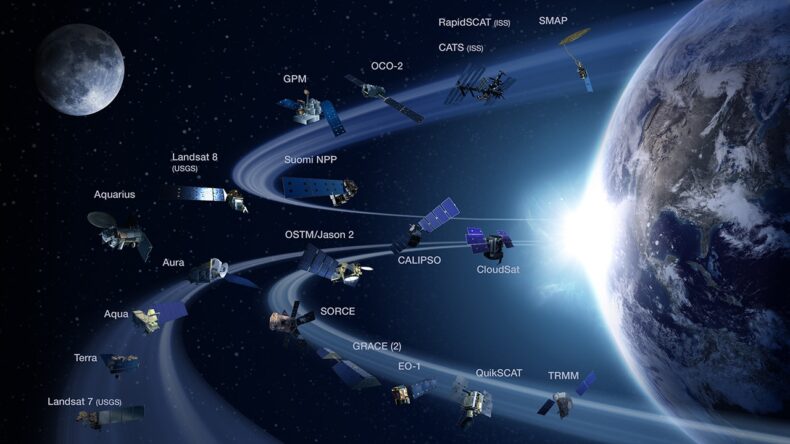Canadian Government set to support NASA’s Atmosphere Observing System with instrumentation to study and fight climate change

On October 18, the Canadian government announced that it will be funding the development of a satellite and supporting instruments contributing to the NASA-led Atmosphere Observing System program. The multi major- satellite program, slated to launch in 2028 and 2031, is launched with the expectation to improve climate modelling, extreme weather prediction, and the monitoring of disasters.
As extreme weather conditions continue to disturb our Earth in increasing frequency and intensity, better environmental prediction is necessary to build better resilience for sustainable adaption and planet resilience.
A 200 million Canadian Dollars ($145 million) has been proposed to be spent by the government on High-altitude Aerosols, Water vapour and Clouds (HAWC), component requirements of NASA’s proposed AOS mission, according to François-Philippe Champagne, Minister of Innovation, Science and Industry, as announced during his speech in Ottowa, Ontario.
“Canada has always played a key role in international space programs, helping to find solutions to global challenges. Today’s more than $200 million announcement builds on those successes with our participation in NASA’s AOS program,” said Champagne.
HAWC is expected to consist of two instruments on a Canadian satellite and a third instrument on a NASA satellite, Both of which (the satellites) are expected to be launched in 2031. The AOS system in total is expected to feature four satellites in polar and inclined orbits, with launches expected to start in 2028. Japanese Space Agency JAXA and French Space agency CNES are also set to provide a satellite and two instruments respectively.
Canadian Space Agency’s early investment in tech development and concept studies has now provided the country to become a crucial part of this important climate science program. Coast-to-coast consortium of universities, Environment and Climate Change Canada, the National Research Council of Canada and Natural Resources Canada are the major Canadian collaborators in the HAWC mission.
“Satellites give us a valuable view of earth; from space we can observe and monitor the weather and our changing climate. The instruments Canada are providing toward this mission will take measurements that are important to understanding weather and climate change, while providing data that will be used by our meteorologists and scientists to enhance predictions and improve our weather, air quality, and climate models.” says Steven Guilbeault, Minister of Environment and Climate Change, Canada
At an Oct. 18 meeting of the Space Studies Board’s Committee on Earth Sciences and Applications from Space, Karen St. Germain, the director of NASA’s Earth science division, said this of the Earth System Observatory: “This is more than a collection of five missions,” and “It really speaks to getting a more holistic of the Earth.”
Including AOS, three other Earth System Observatory missions completed mission concept reviews earlier this summer and are now expecting to pass the Key Decision Point (KDP), an important approval milestone later this fall, according to Germain. This would allow the missions to continue onward to the initial development ‘ Phase A’.
While AOS and other subsequent missions have completed their concept reviews, an independent review of the overall Earth System Observatory was also performed by NASA, says Germain, to “really look across the whole thing and see if we missed anything” in its formulation. The initial findings of this review are expected to be incorporated into future missions ahead of the KDP-A.
AOS or the Atmosphere Observing System is created to provide estimations that are crucial for clarifying factors that contribute to climate and weather change such as aerosol and cloud processes. NASA and other international partner organizations develop and build instruments and spacecrafts to operate an observing system, as a key supporting component of the Earth System Observatory (designed by NASA) to provide data to fight natural hazards and their mitigation, forest fires, climate change, floods, droughts, poor air quality conditions, severe storms etc. and to improve agricultural processes.
The AOS was designed as a response to the recommendations of the Earth Science Decadal Survey of 2018. Two of the five “targeted observables” from that report—atmosphere and clouds, convection, and precipitation—would be supported by the AOS series of satellites.













